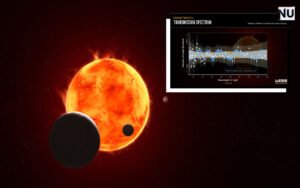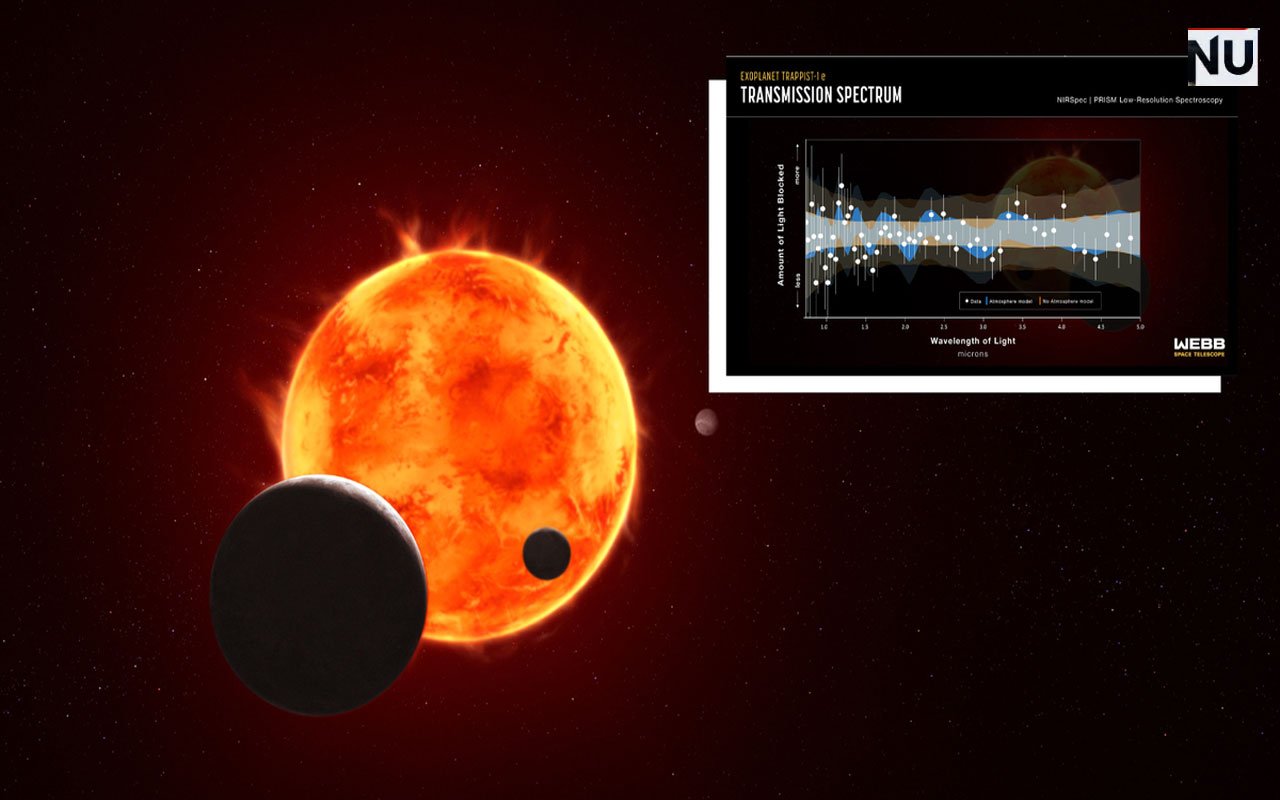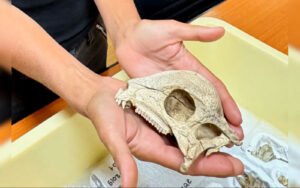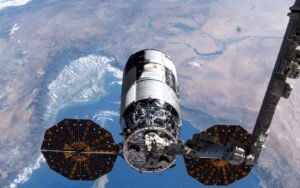Most Earth-Like Planet TRAPPIST-1e Discovered Just 40 Light Years Away JWST Findings
A Breakthrough in Exoplanet Research
Astronomers may have taken the closest step yet toward finding a true “second Earth.” Using NASA’s James Webb Space Telescope (JWST), scientists have detected signs of a possible atmosphere around TRAPPIST-1e, one of the seven Earth-sized planets orbiting a small red dwarf star just 40 light-years away. This discovery could redefine our understanding of habitable worlds in the universe.
TRAPPIST-1e’s Atmospheric Mystery
The new data shows hints of a gaseous envelope that may resemble Earth’s nitrogen-rich atmosphere, which is essential for supporting liquid water on the surface. While the findings are still ambiguous, they rule out hostile Venus-like and Mars-like atmospheres dominated by carbon dioxide. If confirmed, TRAPPIST-1e could be the most Earth-like exoplanet discovered to date.
The Challenge of Red Dwarf Stars
Despite the excitement, astronomers remain cautious. Red dwarf stars, like TRAPPIST-1, are notorious for violent solar flares that can strip nearby planets of their atmospheres. Previous studies of TRAPPIST-1d showed no atmospheric presence at all. However, TRAPPIST-1e is positioned at a slightly safer distance, increasing the chances that its atmosphere has survived.
What Webb’s Data Reveals
Teams from the Space Telescope Science Institute, Johns Hopkins University, and MIT analyzed four separate planetary transits. The starlight passing through TRAPPIST-1e’s atmosphere revealed a spectrum leaning toward molecular nitrogen with traces of carbon dioxide and methane. This combination is tantalizingly similar to Earth’s atmospheric makeup, where nitrogen makes up 78%.
 Why This Discovery Matters
Why This Discovery Matters
If TRAPPIST-1e indeed has a nitrogen-rich atmosphere, it could mean conditions suitable for stable liquid water — the most important ingredient for life. Such a discovery would mark one of the biggest milestones in astronomy, strengthening the case for searching for biosignatures beyond our Solar System.
Looking Ahead
More JWST observations are planned in the coming months to confirm whether TRAPPIST-1e truly harbors an atmosphere. Astronomers emphasize that while current results are promising, much more data is needed. As MIT astrophysicist Ana Glidden explains:
“We’re in a new age of exploration. It’s incredible to measure starlight from Earth-sized planets 40 light-years away and begin to ask whether life might be possible there.”
Future Missions and Research
The discovery of a potential Earth-like atmosphere around TRAPPIST-1e is only the beginning. Scientists are already planning future JWST observations with more refined instruments to confirm the atmospheric composition. Alongside this, upcoming missions such as the European Extremely Large Telescope (E-ELT) and NASA’s Habitable Worlds Observatory could play a crucial role in unlocking further secrets about this exoplanet. These projects may even allow astronomers to detect biosignatures, such as oxygen or methane in specific ratios, which could point toward the possibility of life.
Scientists React with Cautious Optimism
The astronomy community has welcomed the TRAPPIST-1e findings with excitement but also caution. Experts stress that while the data looks promising, it is still inconclusive. Dr. Sara Seager of MIT commented that the discovery “narrows down possibilities and keeps TRAPPIST-1e at the top of the list of habitable candidates,” but warned against rushing to declare it a true Earth twin just yet.
Public Fascination with “Second Earth”
Beyond the scientific world, the potential discovery has captivated the public imagination. Social media is already buzzing with discussions about the possibility of life beyond Earth. For many, the idea that a habitable world could exist just 40 light-years away sparks dreams of future interstellar travel and humanity’s long-term survival. TRAPPIST-1e has quickly become a symbol of hope in the search for life outside our Solar System.
A New Era of Space Exploration
The TRAPPIST-1e findings highlight how far space science has advanced in just a few decades. From the discovery of the first exoplanet in the 1990s to now analyzing the potential atmospheres of Earth-sized worlds, the progress is extraordinary. Astronomers believe we may be on the verge of the biggest breakthrough in human history — proving that life could exist elsewhere in the universe. As JWST continues to gather data, the possibility of answering humanity’s oldest question — “Are we alone?” — feels closer than ever.
🔗 Internal Link (Your Website Example):
Explore More on Space Discoveries🌍 External Source for Readers:
Read NASA’s Official TRAPPIST-1 Research









